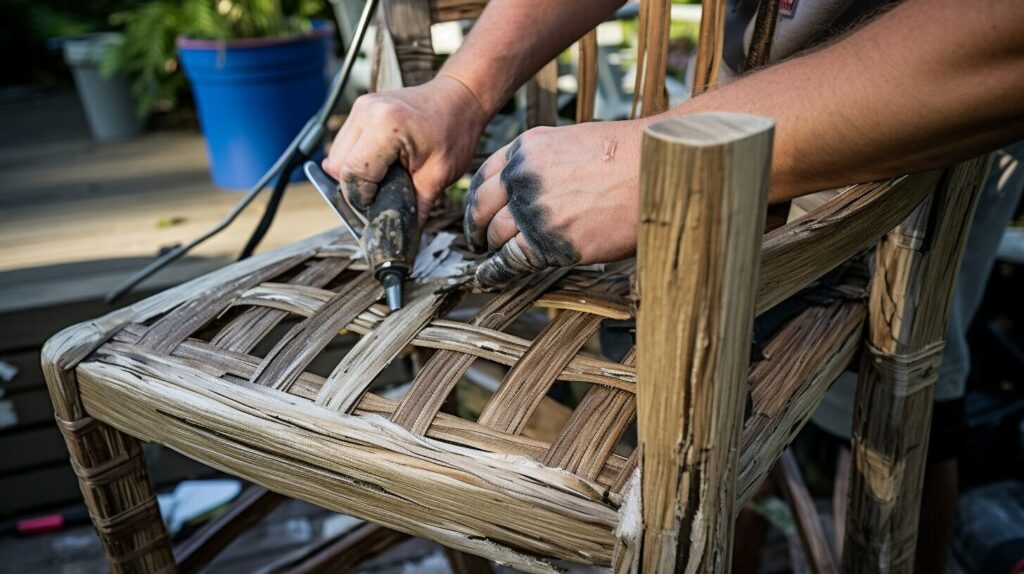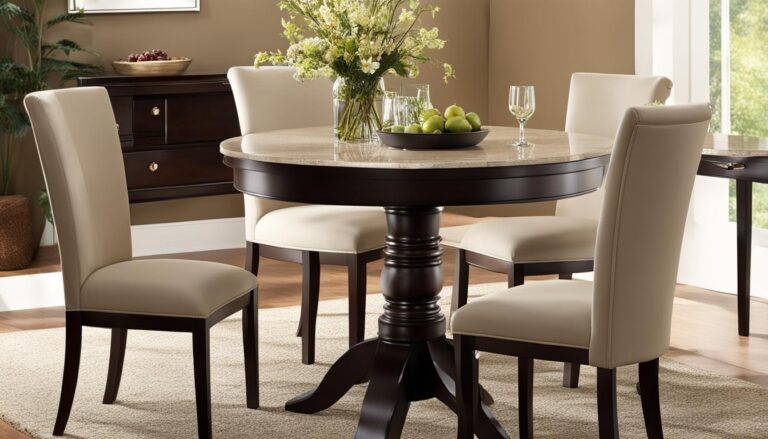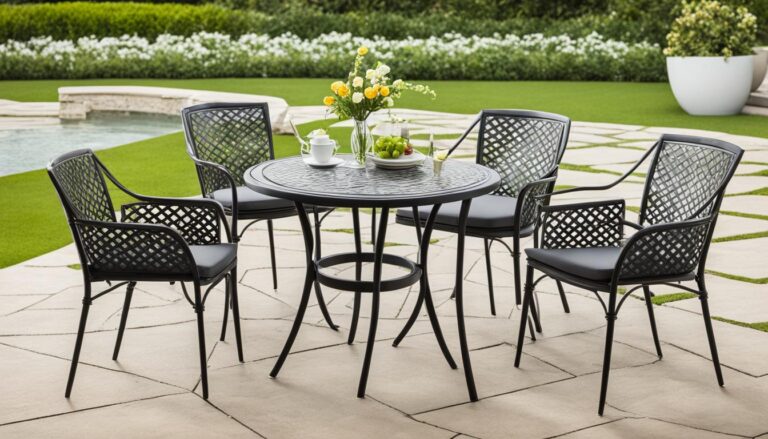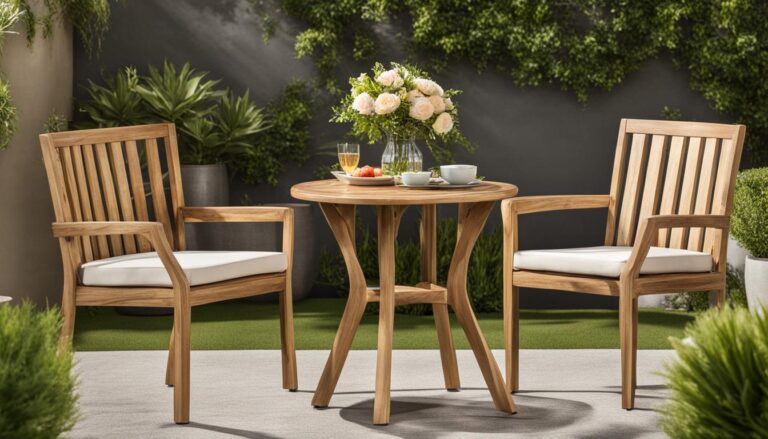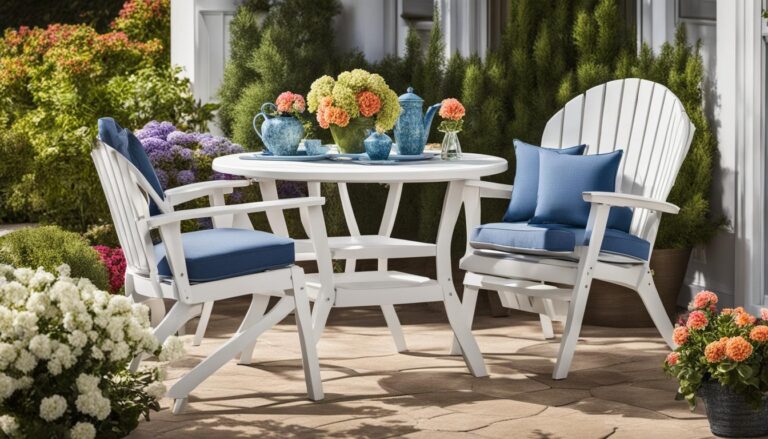Welcome to our guide on how to repair wicker patio furniture! Your outdoor living space is an extension of your home, and you want to keep it in top-notch condition for relaxation and entertainment. However, exposure to the elements can take a toll on your wicker furniture, causing damage to the woven strands or structural issues that affect its stability and aesthetics.
In this article, we will provide you with expert tips and tricks on how to repair wicker patio furniture. From assessing the damage to gathering necessary tools and materials and fixing loose or broken strands to restoring the natural color and enhancing durability and longevity, we’ve got you covered. Whether you’re a DIY enthusiast or looking to hire professional services, you’ll find valuable insights and recommendations to revive your wicker furniture and elevate your outdoor space.
So, grab your tools and let’s get started on repairing your wicker patio furniture!
Assessing the Damage
Before beginning any repairs on your wicker patio furniture, it’s important to assess the damage. Look closely at the furniture to identify any broken or loose strands of wicker. Take note of any unraveling or structural issues, such as a sagging base or loose joints.
Once you’ve assessed the damage, take inventory of any missing or damaged parts. This will help you determine what materials you need to gather before starting the repair process.
Gathering Necessary Tools and Materials
Repairing wicker patio furniture requires a few essential tools and materials. Before you start the repair process, make sure you have the following:
- Scissors
- Glue or adhesive
- Replacement wicker strands or reed
- Heat gun or source of heat
- Spray paint (optional)
You can find these items at your local hardware store or online. Make sure you purchase replacement wicker strands that match the color and size of your current furniture.
Repairing Loose or Broken Strands
If you notice any loose or broken strands in your wicker patio furniture, it’s important to address them before they lead to further damage. Fortunately, there are several ways to repair loose or broken strands, depending on the extent of the damage and your level of skill.
Using Glue
If you have a few loose strands, you can try using glue to reattach them to the frame. Apply a small amount of glue to the end of the loose strand and carefully press it back into place. Hold the strand in place until the glue dries. Avoid using too much glue, as it can seep through the wicker and leave unsightly marks.
Using Heat
If you have a broken strand, you can try using heat to reshape and mend it. Use a heat gun to gently heat the broken end of the strand until it becomes pliable. Once it is soft, bend it back into shape and hold it in place until it cools and hardens.
Reweaving
If you have a more extensive repair, such as a section of unraveled wicker, you may need to reweave the damaged area. Start by removing the damaged section of wicker and cutting a replacement strand to size. Secure one end of the replacement strand to the frame and begin weaving it back and forth through the existing wicker. Once the replacement strand is in place, weave the existing strands back over it to create a seamless repair.
Remember to take your time and work carefully, as wicker can be delicate and prone to further damage if handled roughly.
Fixing Structural Issues
If you notice any structural issues with your wicker patio furniture, such as loose joints or sagging, it’s important to address them as soon as possible to prevent further damage.
To strengthen loose joints: Apply a small amount of wood glue to the affected areas and use clamps to hold the joints together while the glue dries. You can also insert wooden dowels or screws into the joints for added reinforcement.
To fix sagging seats: Remove the cushion and inspect the support structure of the seat. If the webbing has stretched or snapped, you can replace it with new webbing and secure it with staples or screws. You can also add plywood or MDF boards underneath the cushions for added support.
Replacing Missing or Damaged Parts
If you have identified any missing or damaged parts of your wicker patio furniture, it is important to replace them for a seamless repair. Many retailers sell replacement parts online, or you can also try your hand at a DIY replacement.
If you opt for a DIY replacement, begin by taking careful measurements of the damaged area to ensure a perfect fit. For woven panels, purchase replacement strands in a matching color and weave them in using the same pattern as the surrounding strands.
If decorative elements, such as a cap or finial, are missing, you can create a replacement using molding putty or a 3D printer. For more complex replacements, it may be best to seek out the services of a professional wicker furniture repair specialist.
Restoring the Natural Color
If your wicker patio furniture has faded or been damaged by exposure to the elements, restoring its natural color can give it a fresh new look. There are several options for rejuvenating the color of your wicker furniture, including staining or painting.
Staining: Staining is a popular option for restoring the natural color of wicker patio furniture. Choose a stain that matches the original color of your furniture, and test it on a small, inconspicuous area before applying it to the entire piece. Apply the stain with a brush or cloth, following the manufacturer’s instructions. Wipe off any excess stain with a clean cloth.
Painting: Painting your wicker patio furniture can also give it a fresh new look. Choose a high-quality paint that is suitable for outdoor use, and again, test it on a small area first. Apply the paint in thin, even coats, using a brush or spray paint. Allow each coat to dry completely before applying the next one.
Tip: Before staining or painting your wicker patio furniture, be sure to clean it thoroughly and let it dry completely. This will ensure the best possible results.
Cleaning and Maintenance Tips
If you want to keep your wicker patio furniture in top condition, regular cleaning and maintenance are crucial. By taking care of your furniture, you can prevent future damage and extend its lifespan. Here are some guidelines to help you keep your wicker patio furniture looking its best for years to come:
Regular Cleaning
It’s important to clean your wicker patio furniture regularly to remove any dirt, dust, or debris that can accumulate on the surface and in crevices. Use a soft brush or vacuum cleaner attachment to remove loose dirt, and then wipe down the furniture with a damp cloth. Avoid using harsh chemicals or abrasive cleaners that can damage the wicker strands.
Protect from UV Rays
Exposure to sunlight can cause your wicker patio furniture to fade and dry out over time. To protect against UV rays, you can use a furniture cover or move the furniture to a shaded area when not in use. Alternatively, you can apply a UV-resistant sealant or coat the furniture with a protective finish.
Store During Harsh Weather Conditions
During extreme weather conditions, such as heavy rain, snow, or wind, it’s best to store your wicker patio furniture indoors or under cover. This will prevent water damage, warping, or other weather-related issues that can compromise the integrity of your furniture.
Seal with Wax
To keep your wicker patio furniture looking its best, you can also apply a coat of wax or furniture polish. This will help to seal the wicker strands and protect against moisture and mildew. Be sure to choose a wax or polish that is safe for use on wicker furniture.
Trim Loose Strands
Over time, the wicker strands on your patio furniture may become loose or unravel. To prevent further damage, trim any loose strands with a pair of sharp scissors. This will help to maintain the structure of your furniture and prevent further damage.
By following these maintenance tips, you can keep your wicker patio furniture looking great for years to come. With a little TLC, you can enjoy your outdoor living space to the fullest!
Enhancing Durability and Longevity
Keeping your wicker patio furniture in top condition requires proactive care and maintenance. In addition to the repair techniques discussed above, there are several other tips and tricks you can follow to enhance the durability and longevity of your outdoor furniture.
- Invest in protective covers: Covering your furniture when it’s not in use can help protect it from exposure to UV rays, moisture, and debris.
- Apply sealants: Applying a sealant to your furniture can help protect it from moisture and prolong its life. Be sure to choose a product that is appropriate for outdoor use and compatible with your furniture’s material.
- Use weather-resistant materials: Consider opting for furniture made from materials that are specifically designed to withstand outdoor conditions, such as synthetic wicker or metal.
By following these tips and tricks, you can ensure that your wicker patio furniture remains in good condition for years to come.
Tips for DIY Repairs vs. Professional Services
Deciding whether to tackle wicker patio furniture repairs as a DIY project or to hire a professional can depend on various factors.
If the damage is minor, such as a couple of loose strands or a small structural issue, then a DIY repair may be a cost-effective option that you can handle on your own. However, if the damage is extensive or requires specialized tools or expertise, it may be best to seek the services of a professional.
If you’re considering a DIY repair, make sure you have the necessary tools and materials on hand, and carefully follow the repair instructions. If in doubt, it’s always wise to consult a professional or seek advice from a reputable online source.
On the other hand, hiring a professional ensures that the repair job is done correctly and efficiently, with minimal risk of further damage. It can also be a time-saving option if you don’t have the time or patience for a DIY repair.
Ultimately, the decision comes down to your level of skill, available time, and budget. Regardless of the option you choose, be sure to prioritize regular maintenance to keep your wicker patio furniture in top shape for years to come.
Conclusion
Congratulations! You’ve now learned how to repair wicker patio furniture like a pro! Through the assessment of damages, gathering materials, and following our expert tips and tricks, you can now extend the lifespan of your beloved outdoor furniture.
Remember, regular maintenance and repairs are essential to keep your wicker patio furniture in good condition. Cleaning and protecting your furniture from the elements can prevent future damage and save you the time and resources required for major repairs.
By restoring the natural color, fixing structural issues, and replacing missing or damaged parts, you can keep your wicker furniture looking like new. If you decide to hire professional services, choose a reputable and experienced company to ensure quality results.
Enhancing your furniture’s durability and longevity can be achieved by using protective covers and opting for weather-resistant materials. With our practical tips and tricks, you can transform your outdoor living space and enjoy your wicker furniture for years to come.
Take Action!
Don’t let your wicker patio furniture go to waste! Roll up your sleeves, gather your tools and materials, and get started on repairing and restoring your furniture today. Your outdoor living space will thank you for it!

